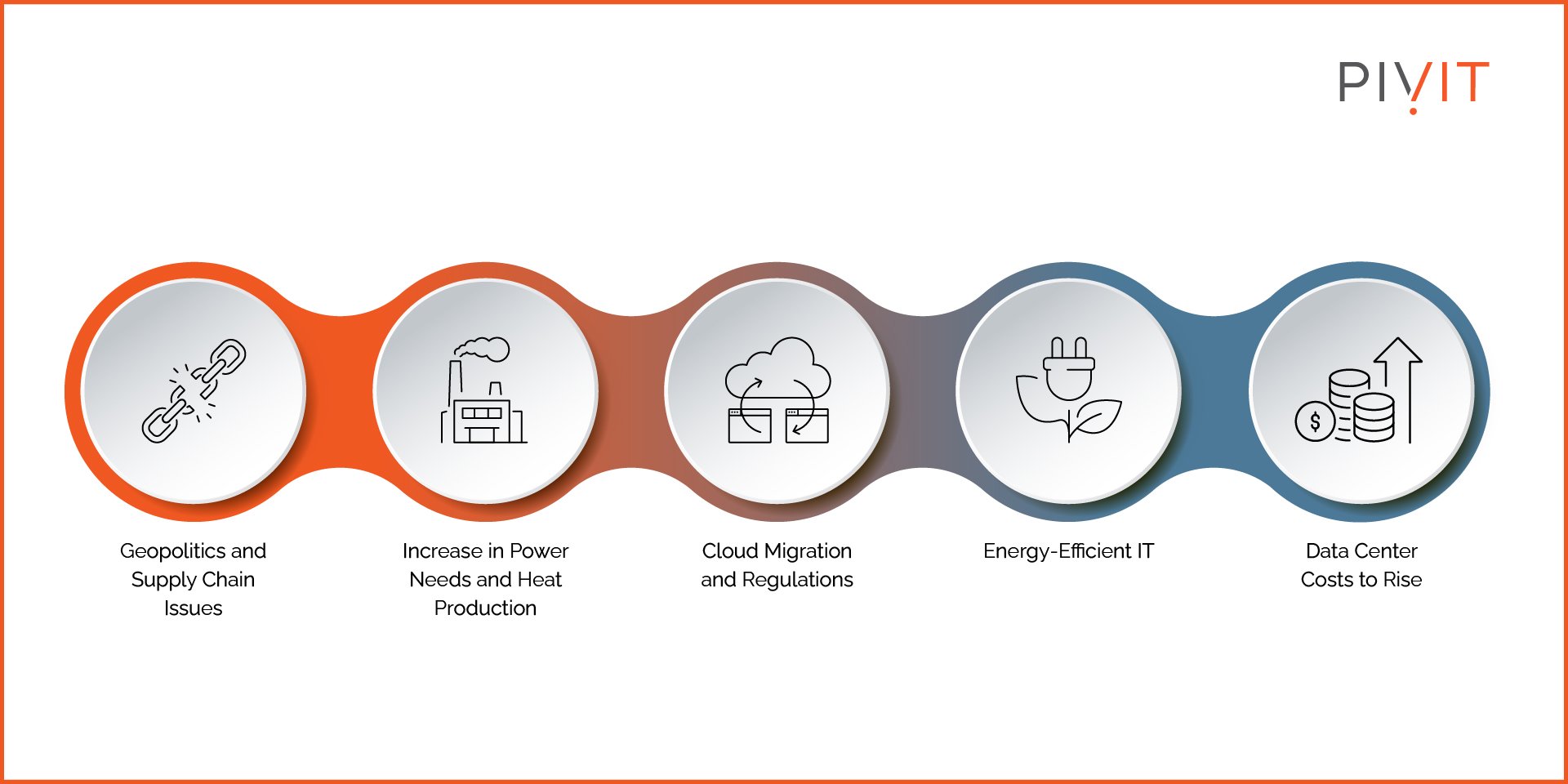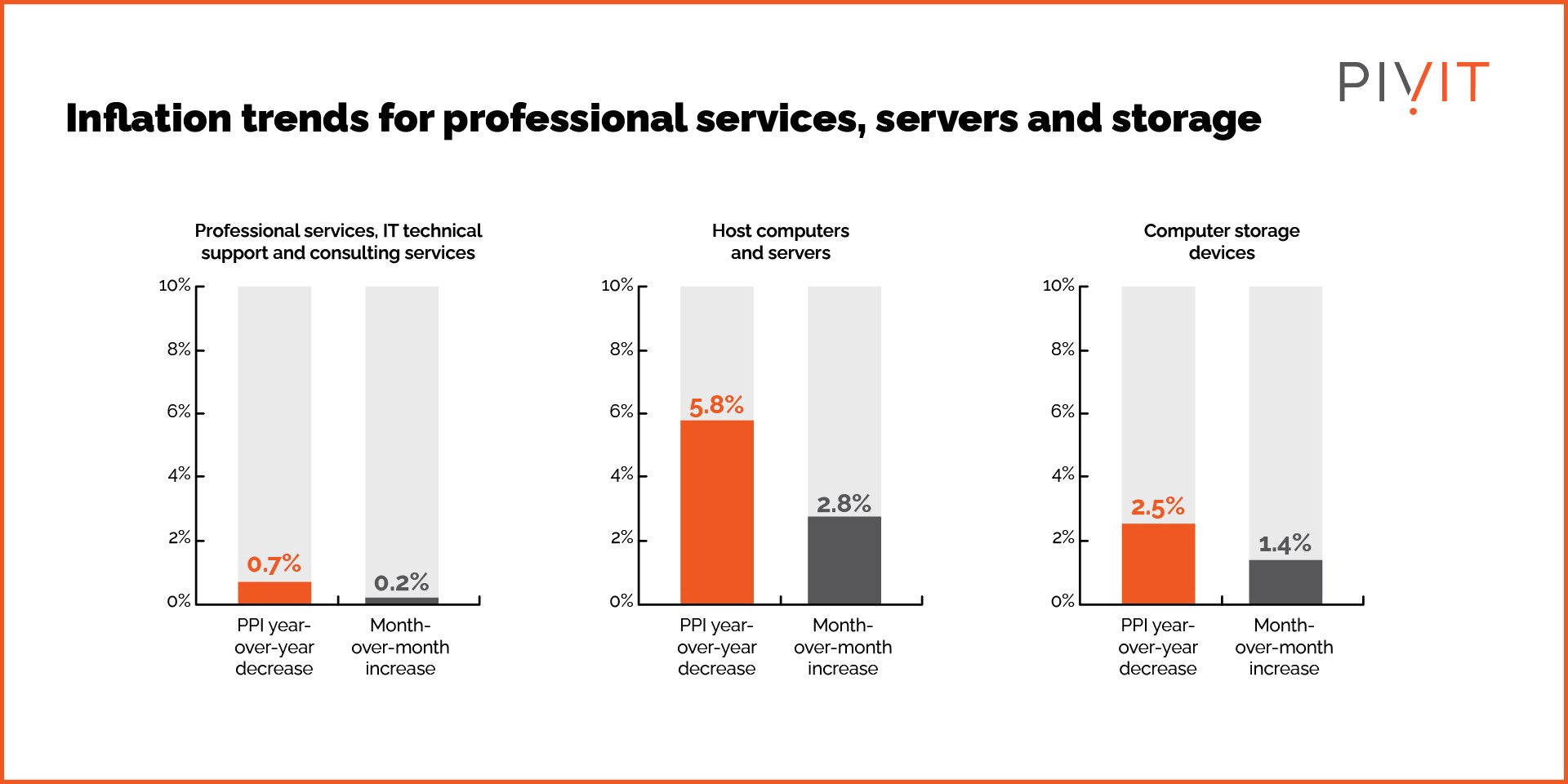Uptime Institute’s Five Data Center Predictions: Are They Coming True?
%20Uptime%20Institute%E2%80%99s%20Five%20Data%20Center%20Predictions%20Are%20They%20Coming%20True.png)
The Uptime Institute released its report ‘Five Data Center Predictions for 2023’ at the beginning of the year. With a tumultuous year of manufacturing and supply chain issues, one would expect things to improve in 2023. However, the economic uncertainty at the beginning of 2023 is well accounted for in the Uptime Institute’s predictions.
Unlike many other trend reports, they took a more realistic route with their predictions, considering the continuing challenges for the IT industry, in general, and data centers, in particular.
Now that we’re well into 2023, this article examines whether these five predictions have come true. We also discuss what data centers can do to address the current challenges and navigate the remaining months of a year marked by some big changes in the tech industry.
Let’s discuss the five predictions in light of the events and trends we’ve witnessed in the first half of 2023.

1. Geopolitics and Supply Chain Issues
Uptime Institute's first prediction for data centers in 2023 was that the supply chain issues, particularly those around chip shortages, would continue well into 2023. They also predicted that the geopolitical tension, especially in the wake of the ongoing war in Europe, would contribute to the growing pressure on data center supply chains.
They identified two main areas highly dependent on global interconnections and are, therefore, more likely to suffer. These include semiconductor supply chains and subsea cable systems.
For the supply chain of semiconductors, the issues with slow supply arise from the intricate network of suppliers. While there are a handful of major manufacturers, the materials for the chips are sourced from the world over. This makes the supply chain vulnerable to geopolitical tensions.
Similarly, they raised concerns for undersea cable systems, pointing to their vulnerability to sabotage and the consequent impact on data centers.
Update:
The prediction about supply chain issues and geopolitical tensions has largely been true. Although supply chain delays have significantly reduced from the previous year, the speed has yet to return to pre-pandemic levels.
Moreover, the geopolitical tensions between China and the U.S. have contributed to the chip shortage issues. However, many countries have since taken policy actions to domesticate semiconductor production. The U.S. and the U.K. are the most notable in this regard, vying to invest billions in bringing semiconductor production home and ensuring a consistent supply of this crucial component for virtually all IT hardware.
Fortunately, there has been no sea cable sabotaging incident so far.
2. Increase in Power Needs and Heat Production
Standard IT hardware’s consistent power and cooling demands have greatly benefited data center planning for the last two decades. However, Uptime Institute predicted that this would soon change.
Generally, the predictable power consumption by processors and server components was 4-6 kW per rack (complying with ASHRAE guidelines). However, with shifting IT power density, thanks to newer processors, these stable design parameters will need to change.
Since facilities constructed today are expected to remain economically competitive and technically capable for 10 to 15 years, future-proofing data center designs without the certainty of future IT rack specifications add to the challenge. The increasing power consumption of servers would destabilize existing design assumptions. That, in turn, will put pressure on cooling and power delivery within the server chassis.
Update:
While the latest data support this prediction, data center racks may take a couple of years to cross the average 10 kW per rack threshold. Many companies are already investing in more efficient cooling technologies to address the increase in cooling requirements for more dense racks.
Liquid cooling is emerging as a viable, sustainable solution for dissipating heat in data centers. Although adoption is low at the moment, this technique can address the cooling needs created by today’s power-hungry processors.
3. Cloud Migration and Regulations
The Uptime Institute’s third prediction may be controversial for some, as it predicts a slowdown in cloud migration due to rising costs and regulatory complications. They say the preconceived notion that moving applications to the public cloud is low-risk and cost-effective is changing.
While many organizations were quick to adopt the cloud and move applications, sometimes their entire infrastructure, to the cloud, they now face increased regulatory scrutiny and the growing cyber threats to public clouds.
The Uptime Insitute attributes the lack of analysis on the part of the enterprises to the low resilience and profitability of certain applications. They believe such companies failed to analyze the value of moving an asset to the cloud and simply got on the bandwagon.
Moreover, it also predicted increased scrutiny from regulators, especially for hyperscalers, as authorities step in to prevent overconcentration of power in the public cloud sector.
Update:
Cloud migration was predicted to continue into 2023, with Gartner predicting an increase of 21.7 percent in cloud spending. We don’t have the official numbers on the enterprise cloud migration for the first half of 2023. However, as per Uptime Institute’s prediction, the cost of migrating to the cloud has risen substantially.
As the report said, organizations are beginning to evaluate the risks and costs of lift and shift migration, particularly critical applications. Some companies have realized that the cost benefits of moving away from on-premise weren’t that significant.
For instance, the SaaS vendor 37signals announced in early 2023 that they are bidding farewell to AWS and going with a colocation provider. The company’s CTO explained that the move to the cloud didn’t have the cost-benefit they had expected. Moving to on-premise and colocation will save the company significantly in operating costs.
4. Energy-Efficient IT
The fourth prediction of Uptime Institute was a positive one. They say that data centers will invest heavily in energy-efficient IT hardware due to growing energy demands, rising energy prices, and increased pressure from governments and environmental activists.
They say that new data centers and those getting redeveloped must consider power usage and cooling to ensure they comply with increasingly stringent carbon reporting requirements, such as in the European Union.
The report also blames the underutilization of servers for energy wastage in the data center industry.
Update:
As per Uptime Insitutue’s prediction, sustainability has been a big theme in IT hardware in 2023. With data centers facing strict regulatory requirements in key regions, their focus is shifting toward energy-efficient equipment and innovative design schemes to reduce their carbon footprint.
Manufacturers are responding with advanced hardware equipped with energy-efficient components that promise to decrease consumption. Vendors like Cisco and Juniper are vying to offer more sustainability-focused equipment for modern data centers.
5. Data Center Costs to Rise
The last prediction of the Uptime Institute was that data center costs would continue to rise in 2023. Both capital expenditure and operating costs would increase dramatically due to higher inflations, supply chain issues, increasing labor costs, and unprecedentedly high demand.
Update:
Data center operating costs have increased since the beginning of the year, mainly because of increased energy prices in certain regions. Similarly, 2023 is proving to be an expensive time to refresh, as equipment prices have increased consistently. For instance, server price increases month-on-month averaged 2.8%.

(Source: data)
Many data centers are now considering delaying refresh cycles by continuing to maintain existing equipment.
Brace for the Future
Data centers face serious challenges like supply chain issues and increased regulations regarding data protection and energy consumption. The need of the hour is to adopt a strategy that addresses these challenges and issues head-on without losing sight of business goals.
With increased data demands, growth is inevitable for many data center facilities. However, this growth needs to be managed to ensure budget and regulatory compliance.
With costs set to rise throughout the year, the best way to keep capital expenditure down is to maintain existing assets. OneCall can help data centers maintain legacy equipment, especially those no longer supported by the manufacturer.
Learn how OneCall can help you sustain your bottom line!

